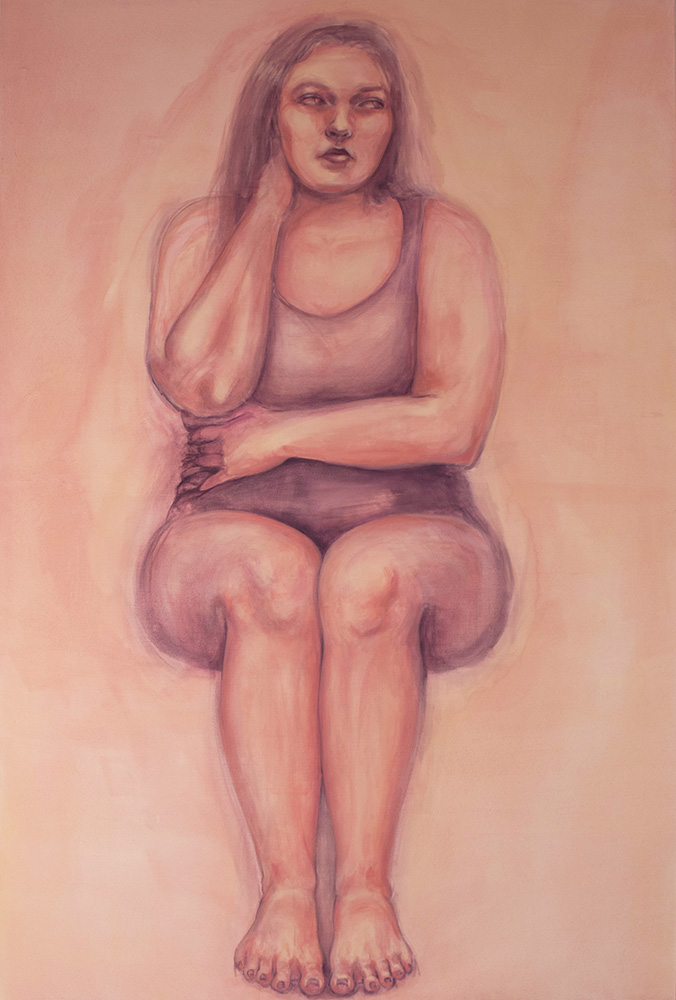Open gallery

Emotion in Chroma
People are often capable of masking their feelings and reactions; in many cases, we are culturally trained to do so. My work breaks down the boundary between thoughts and expression, using color to betray the mind of the subject. The invented color palettes
evoke feelings more strongly than the natural color would, suggesting the inner dialogue
and anxieties of the figure.
My large oil self-portraits react to the societal pressures placed on women and their bodies. The insecurity borne from these expectations finds its way into the colors and subtle gestures of the figures. As self-portraits, they both reflect on broader experiences and are inspired by my own. Maintaining a facade of health and happiness–along with worrying over body image–are daily counterparts of life. These insecurities spill over the edges in my work, as the figure struggles internally in front of the viewer. Less culturally concerned, the watercolor portraits focus on the specificities of the individual. Color speaks volumes without the body having to pointedly participate.
In the self-portraits and other watercolors, I use carefully constructed palettes that speak to each person’s emotional depth and character, examining how color can express these ideas in and of itself. There is also diversity in reaction, as these colors may mean something different from viewer to viewer. This does not detract from the intentions of the work; rather, it creates interactions which foster more connections between our perceptions of color and thought.
In the words of Pablo Picasso, “Colors, like features, follow the changes of emotions.”














